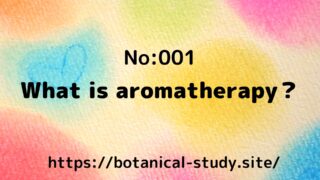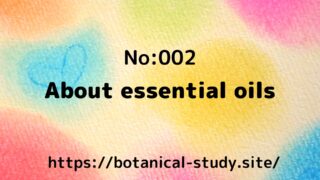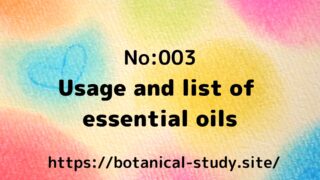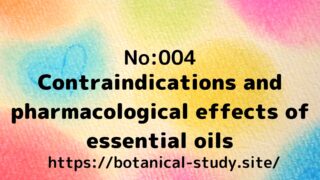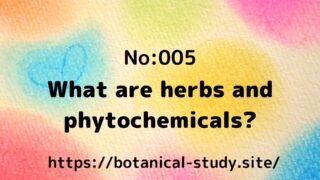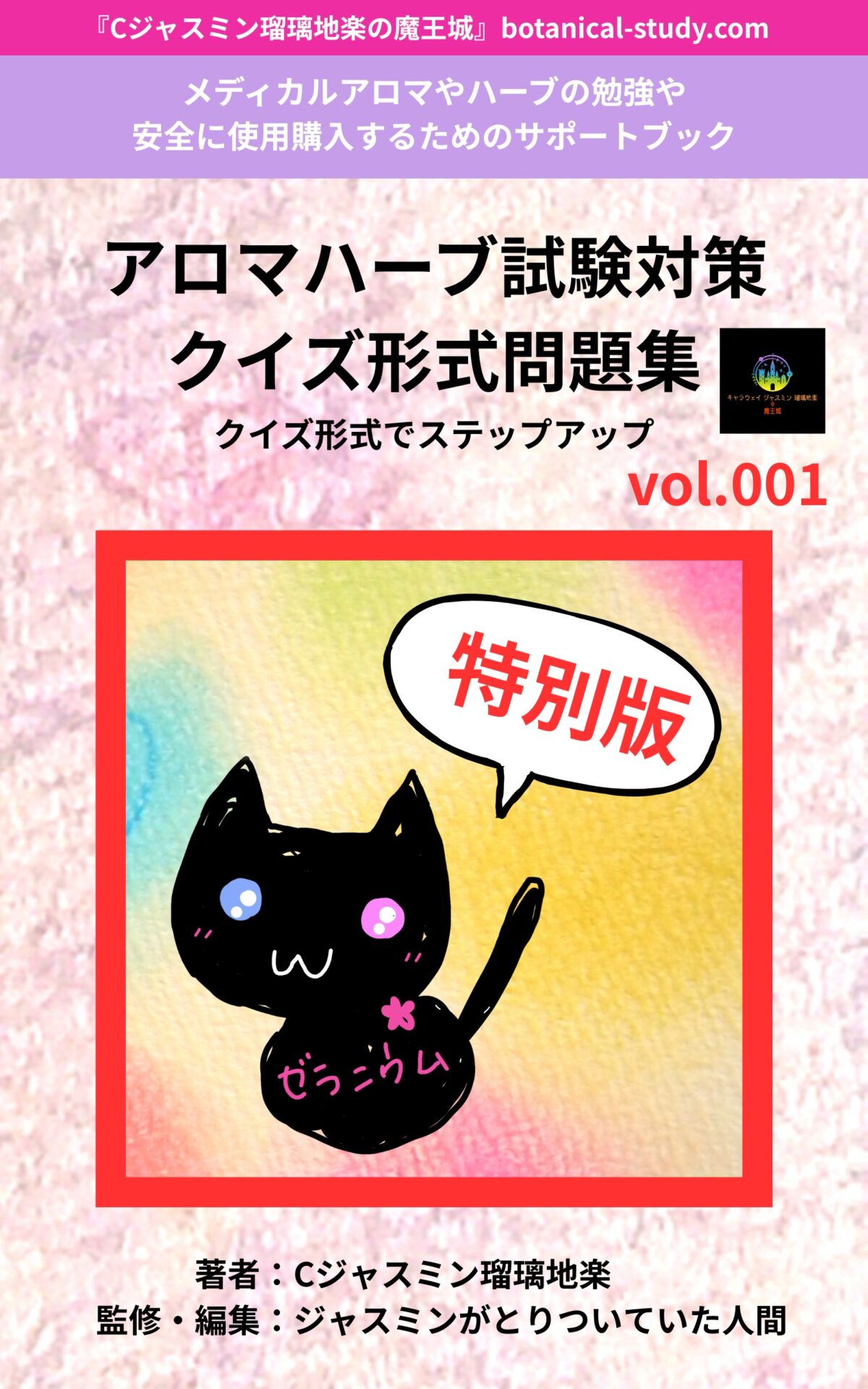6:Herbs by family name, pharmacological actions and contraindications

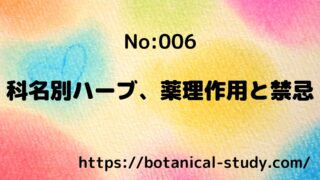
- Attention for Those on Medication: Beware of Herb-Drug Interactions!
- List of Herbs (By Family)
- [Malvaceae Family]
- [Cannabaceae Family]
- [Brassicaceae Family]
- [Linaceae Family]
- [Iridaceae Family]
- [Poaceae Family]
- [Urticaceae Family]
- [Araliaceae Family]
- [Hypericaceae Family]
- [Valerianaceae Family]
- [Ebenaceae Family]
- [Asteraceae Family]
- [Apocynaceae Family]
- [Lauraceae Family]
- [Verbenaceae Family]
- [Moraceae Family]
- [Piperaceae Family]
- [Pedaliaceae Family]
- [Scrophulariaceae Family]
- [Araceae Family]
- [Illiciaceae Family]
- [Lamiaceae Family]
- [Tiliaceae Family]
- [Zingiberaceae Family]
- [Caprifoliaceae Family]
- [Poaceae Family]
- [Apiaceae Family]
- [Polygonaceae Family]
- [Ericaceae Family]
- [Commelinaceae Family]
- [Equisetaceae Family]
- [Passifloraceae Family]
- [Solanaceae Family]
- [Caryophyllaceae Family]
- [Myristicaceae Family]
- [Tropaeolaceae Family]
- [Rosaceae Family]
- [Amaryllidaceae Family]
- [Cupressaceae Family]
- [Geraniaceae Family]
- [Myrtaceae Family]
- [Fabaceae Family]
- [Rutaceae Family]
- [Berberidaceae Family]
- [Boraginaceae Family]
- [Oleaceae Family]
- [Magnoliaceae Family]
- [Aquifoliaceae Family]
- [Gentianaceae Family]
- [Arecaceae Family]
- [Dioscoreaceae Family]
- [Orchidaceae Family]
- [Liliaceae Family]
- List of Flower Essence Names (by Family)
- What does ‘herb adaptability’ mean?
- Attention is needed for interactions between famous herbs and medications
- The most important thing when using herbs! Main drug interactions
- The basic usage is herbal tea!
- Pets and Herbs?
- Is it okay to use herbs every day?
- Herb Chemistry and Main Pharmacological Effects
- 【Reminder!】Things to Check for Safe Usage
Attention for Those on Medication: Beware of Herb-Drug Interactions!
Synthetic drugs, often synonymous with Western medicine, are created by extracting single components from plants.
Both foods and herbs (beneficial plants) can interact with each other, so caution is needed during meals.
Medicines and herbs, however, can have “drug interactions,” so those undergoing treatment or taking medication should be particularly careful.
Considering the mechanisms of metabolism, it is crucial to use herbs safely and correctly by taking into account your physical condition and properly researching their use.

Herbs are natural substances! The heart medication digitalis comes from the toxic plant foxglove!
In recent years, there has been increasing attention and research on the safety of herbs and other natural substances, alongside their beneficial components and effects.
List of Herbs (By Family)
“Family Names” are Important to Remember for Identifying High-Quality Herbs.
They Tend to Appear Frequently in Certification Exams.
List of essential oil names by family and list of aromatherapy herb bases by family are as follows
[Malvaceae Family]
“Marshmallow” “Hibiscus”
[Cannabaceae Family]
“Hop”
[Brassicaceae Family]
“Shepherd’s Purse” “Mustard” “Wasabi”
[Linaceae Family]
“Flax”
[Iridaceae Family]
“Saffron”
[Poaceae Family]
“Kuma Bamboo Grass” “Job’s Tears” “Palmarosa” “Lemongrass”
[Urticaceae Family]
“Nettle”
[Araliaceae Family]
“Siberian Ginseng” “Korean Ginseng”
[Hypericaceae Family]
“St. John’s Wort”
[Valerianaceae Family]
“Valerian”
[Ebenaceae Family]
“Persimmon”
[Asteraceae Family]
“Artichoke” “Echinacea” “Chamomile, German”
“Chamomile, Roman” “Calendula” “Chrysanthemum” “Cornflower”
“Safflower” “Stevia” “Dandelion” “Burdock”
“Feverfew” “Milk Thistle” “Chrysanthemum”
[Apocynaceae Family]
“Gymnema”
[Lauraceae Family]
“Cinnamon Bark” “Laurel”
[Verbenaceae Family]
“Chasteberry” “Lemon Verbena”
[Moraceae Family]
“Mulberry”
[Piperaceae Family]
“Pepper”
[Pedaliaceae Family]
“Sesame”
[Scrophulariaceae Family]
“Eyebright” “Mullein”
[Araceae Family]
“Pinellia”
[Illiciaceae Family]
“Star Anise”
[Lamiaceae Family]
“Oregano” “Savory” “Perilla” “Spanish Sage”
“Sage” “Wild Thyme” “Thyme” “Basil” “Peppermint”
“Bergamot” “Lavender” “Rosemary”
[Tiliaceae Family]
“Linden”
[Zingiberaceae Family]
“Turmeric” “Cardamom” “Shell Ginger” “Ginger”
[Caprifoliaceae Family]
“Elderflower”
[Poaceae Family]
“Daylily”
[Apiaceae Family]
“Anise” “Caraway” “Cumin” “Coriander”
“Celery” “Chervil” “Dill” “Parsley”
[Polygonaceae Family]
“Yellow Dock”
[Ericaceae Family]
“Cranberry” “Heath”
[Commelinaceae Family]
“Dayflower”
[Equisetaceae Family]
“Horsetail”
[Passifloraceae Family]
“Passionflower”
[Solanaceae Family]
“Goji Berry” “Chili”
[Caryophyllaceae Family]
“Chickweed”
[Myristicaceae Family]
“Nutmeg”
[Tropaeolaceae Family]
“Nasturtium”
[Rosaceae Family]
“Apricot” “Hawthorn Berry” “Meadowsweet”
“Raspberry Leaf” “Lady’s Mantle” “Rose Buds”
“Rose Hip” “Rose Petal” “Wild Strawberry”
“Wild Cherry”
[Amaryllidaceae Family]
“Garlic” “Chives”
[Cupressaceae Family]
“Juniper”
[Geraniaceae Family]
“Geranium”
[Myrtaceae Family]
“Clove” “Tea Tree” “Eucalyptus”
[Fabaceae Family]
“Fenugreek” “Rooibos”
[Rutaceae Family]
“Orange Peel” “Japanese Pepper” “Neroli”
[Berberidaceae Family]
“Epimedium” “Nandina”
[Boraginaceae Family]
“Borage”
[Oleaceae Family]
“Sweet Olive” “Jasmine”
[Magnoliaceae Family]
“Kobushi Magnolia” “Ho Tree”
[Aquifoliaceae Family]
“Mate”
[Gentianaceae Family]
“Swertia”
[Arecaceae Family]
“Saw Palmetto”
[Dioscoreaceae Family]
“Wild Yam”
[Orchidaceae Family]
“Vanilla”
[Liliaceae Family]
“Aloe” “Mountain Lily”
List of essential oil names by family and list of aromatherapy herb bases by family are as follows
List of Flower Essence Names (by Family)
It is important to remember the ‘family name’ to identify high-quality herbs.
It is also a common topic on certification exams.
[Fabaceae Family]
“Gorse”
List of essential oil names by family and list of aromatherapy herb bases by family are as follows
What does ‘herb adaptability’ mean?
Adaptability’ means ‘what kind of physical ailments it is beneficial for’.
Explaining the components, effects, and adaptability of individual herbs is considered difficult due to the nature of the herbs and various reasons.

It might be a good idea to look it up in books or consult a specialty store before making a purchase!
It is also recommended to choose based on the following descriptions:
[Herb Name] [Scientific Name] [Effect] [Adaptability] [Side Effects/Contraindications]
- Nettle [Effect: Diuretic, etc.] [Adaptability: Hay fever, etc.]
- Heath [Effect: Whitening, etc.] [Adaptability: Pigmentation, etc.]
- Mulberry [Effect: Blood sugar regulation, etc.] [Adaptability: Prevention of lifestyle-related diseases, etc.]
- Artichoke [Effect: Liver function enhancement, etc.] [Adaptability: Arteriosclerosis, etc.]
Attention is needed for interactions between famous herbs and medications
A: The herb “St. John’s Wort” and the medication “anticoagulants” among others
- Known to be beneficial for cuts and often referred to as “natural antidepressant”.
- Using “St. John’s Wort” with the mentioned medication is said to inhibit the drug’s effect.
- As this herb is believed to be beneficial for various diseases, it has interactions with many medications, potentially life-threatening.
B: The herb “Echinacea” and the medication “immunosuppressants”
- “Echinacea” is said to boost immunity, but using it with the mentioned medication is said to significantly reduce the drug’s effect.
C: The herb “Mulberry” and the traditional Chinese medicine “cinnamon-containing drugs”
- “Mulberry”, when taken before meals or with meals, is said to be beneficial for dieting.
- Using it with the mentioned medication is said to excessively lower blood sugar levels.
The most important thing when using herbs! Main drug interactions
Herbs are considered ‘food’, but due to the phytochemical components they contain, they can have ‘pharmacological effects’.
As mentioned in ‘No: 005 Herbs, Phytochemicals 04|How Do Herbs Affect the Mind and Body?’, some herbs are said to interfere with the effects of medications through ‘drug metabolism pathways’.
While not all herbs have such effects, it is important to research the actions and impacts of the herbs themselves, in addition to considering your own health condition before using them.
Additionally, consulting with a doctor or pharmacist may also be important in some cases.

This is important! ‘Self-responsible use is the principle,’ and people who are on medication or have a medical history should be cautious!
The basic usage is herbal tea!
【Hot Brew Herbal Tea】
Wash and place the appropriate amount of fresh herbs, or place the appropriate amount of dried herbs, into a teapot.
Pour the appropriate amount of hot water into the teapot and close the lid.
Let it steep for the appropriate amount of time based on the parts used, to extract the phytochemical components.
Pour into a cup, and it’s ready to enjoy!
【Cold Brew Herbal Tea】
Place the appropriate amount of herbs into a glass bottle or similar container.
Pour the appropriate amount of water into the glass bottle, close the lid, and place it in the refrigerator.
Let it sit for 6-8 hours to extract the phytochemical components, then remove the herbs.
Pour into a glass, and it’s ready to enjoy!

◆ Dried herbs: Leaves and flowers → 3 minutes, Stems, roots, and seeds → 5 minutes
◆ Fresh herbs: 1-3 minutes
If herbs are left in hot water for longer than the required time, the extracted phytochemical components may return to the tea leaves, so be careful!
Pets and Herbs?
Using herbal powders for dogs to help increase their appetite, for example, might be more familiar to pets compared to essential oils in aromatherapy.
However, it is said that some herbs can be harmful to pets if ingested, so caution is necessary.
Is it okay to use herbs every day?
Using the same essential oil in aromatherapy for an extended period can accumulate in the body and potentially cause stress.
Some herbs contain essential oil components. Additionally, some herbs without essential oil components are also said to be better not consumed for extended periods.
Herbs are classified as “food”. Just like it’s good to consume a balanced diet without continually eating the same food, it’s recommended to take breaks when using the same herb over a long term, set a limit on the number of times per week you consume it, or blend multiple herbs for consumption.
Furthermore, consulting with a healthcare professional, such as a doctor or pharmacist, is also important in some cases.

There are herbs with “drug interactions” or “contraindications”!
There are many more, so please check and verify for yourself!
Herb Chemistry and Main Pharmacological Effects
Phytochemical components are “plant secondary metabolites.” The following three groups are well-known.
They exhibit various pharmacological effects, similar to essential oils, because they are composed of various organic chemical components, each with its own effects and impacts.
A: Terpenoids (Terpene Compounds)
- Saponins: Antitussive effects, expectorant effects, anti-inflammatory effects, etc.
- Cardiac glycosides: Cardiotonic effects, diuretic effects, etc.
- Essential oils: Immunomodulatory effects, antiviral effects, sedative effects, and many other effects
B: Phenolic Compounds
- Anthraquinones: Laxative effects, etc.
- Tannins: Antiviral effects, inhibition of mutagen and cancer promoter activities
- Coumarins: Phototoxic effects, etc.
- Flavonoids: Antibacterial effects, cholagogue effects, etc.
C: Alkaloids
- Analgesic effects, hypotensive effects, etc.

There are also the following:
“Mucilage,” “Bitters,” “Pungents,” “Vitamins,” “Minerals”

“Terpenes” and “Phenols” also appear in the chemistry of essential oils!
Essential oils are also secondary metabolites!
【Reminder!】Things to Check for Safe Usage
- There are many imitations, but let’s use high-quality herbs.
- Use herbs according to your physical condition, observing as you go.
- Researching through specialized books before use leads to safe usage.
- Herbs deteriorate, so check the manufacturing date and expiration period from the time of opening.
- Deteriorated herbs can negatively affect your mind and body.
- After opening, store in a cool, dark place to avoid direct sunlight.
- Pregnant and breastfeeding women, as well as infants, need to be cautious.
- Those undergoing treatment, taking medication, or with a medical history may have contraindications.
- Because unwanted adverse effects may occur on the mind and body by using herbs, those taking medication or with a medical history should check before use.
- Essential oils are classified as miscellaneous goods in Japan, and herbs are classified as food, but they have “pharmacological effects.”
- It may be safer to use by consulting with a specialist, doctor, or pharmacist.
- Be careful, as there are interactions between medication and essential oils or herbs.
- The principle is that the use of herbs, etc., is “at your own risk.”
- Understand the good effects as well as the bad effects (contraindications and precautions).
- Use in accordance with usage, dosage, and application period.

I hope this serves as a motivation for you to check specialized books and other sources.
That’s why I strongly encourage you to do further research.

